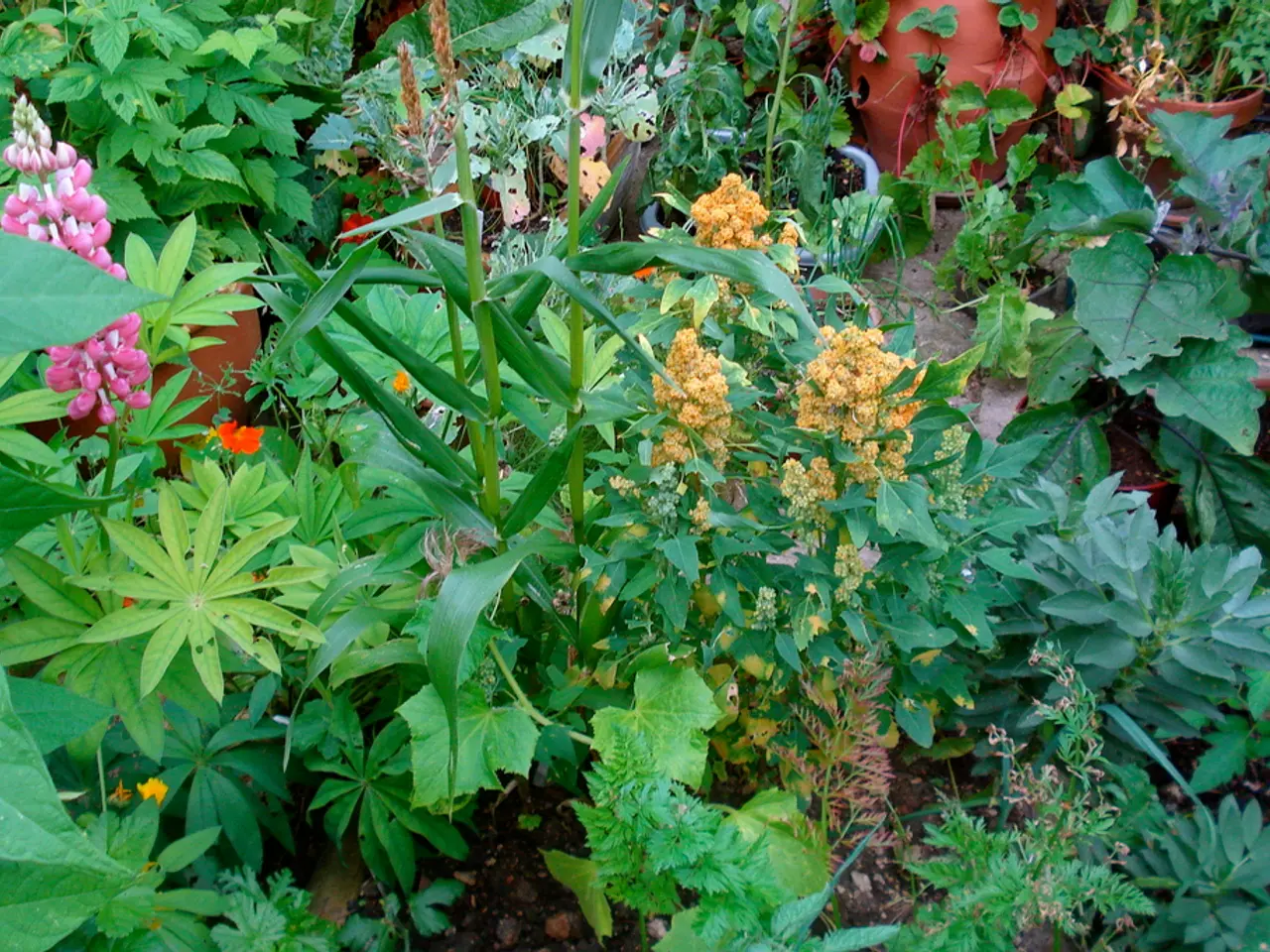Method for Cultivating Curry Leaves
Growing and Caring for the Curry Plant: A Guide for Garden Enthusiasts
The curry plant, scientifically known as Helichrysum italicum, is a fascinating evergreen perennial that adds a unique aroma to any garden. With its strong, curry-like smell and attractive silver-grey leaves, this plant is a great addition to Mediterranean-style gardens.
Growing from Seeds
To start your curry plant journey, you can sow the seeds indoors during spring on the surface of moist, peat-free seed compost. It is essential to keep the seeds in a cool, well-ventilated place. Germination usually takes 7-10 days. Once the seedlings emerge, transplant them to individual small pots and grow them in cooler conditions.
Growing from Young Plants
Growing from young plants is often easier and quicker. Look for curry plants in the herb section of nurseries and garden centres, as well as under ornamental plants. Plant them in spring after the last frost or early fall to allow root establishment.
Best Growing Conditions
The curry plant thrives best in warm, dry, sunny environments, reflecting its Mediterranean origin. It needs full sun with at least 6-8 hours of direct sunlight daily to keep foliage compact, healthy, and fragrant. Indoors, place it near a bright south-facing window; outdoors, choose a sunny spot with good air circulation.
The plant prefers well-draining sandy or gritty soil. If your soil is heavy clay, amend it with sand or grit for proper drainage. The soil pH should be slightly alkaline to neutral, around 6.5 to 7.5.
The curry plant is drought-tolerant but should not be waterlogged. Let the soil dry out between watering to prevent root rot.
Hardiness and Spacing
The curry plant is hardy in UK gardens down to around -10°C, making it a versatile choice for many gardens. When planting, space them about 12-24 inches apart for good air circulation.
Pruning and Harvesting
Pruning the curry plant should be done lightly in mid-spring, taking off the top few centimeters of all shoots. This encourages bushier growth and more fragrant foliage.
Harvest curry plant leaves by cutting the top sections of young, non-flowering shoots. After flowering, cut back the plant by around a third to deadhead and remove the shoot tops.
Pest and Disease Resistance
The curry plant has good natural resistance to pests and diseases, making it a low-maintenance addition to your garden.
Ideal Placement
The curry plant is ideal for border edges, raised beds, and informal small hedges. With a recommended spacing of 60cm apart, it can create a beautiful, aromatic border.
One compact variety of the curry plant is 'Helichrysum italicum' 'Dartington', which grows to 50cm x 60cm, making it perfect for smaller gardens. Another variety, 'Helichrysum italicum', is a bushy subshrub with aromatic, silver-grey leaves and dark yellow flowerheads, growing to 60cm x 90cm.
Using the Curry Plant
Strip the leaves from the stems before chopping and drying them. Finely chopped curry plant leaves make good additions to salads, soups, and stews. Their strong aroma adds a unique flavour to your dishes.
[1] RHS (Royal Horticultural Society). (2021). Helichrysum italicum. Retrieved from https://www.rhs.org.uk/Plants/124118/Curry-plant/Details
[2] HGIC (Clemson University Cooperative Extension). (2021). Curry Plant. Retrieved from https://hgic.clemson.edu/factsheet/curry-plant/
[3] Gardener's World. (2021). Curry Plant. Retrieved from https://www.gardenersworld.com/plants/curry-plant/
[4] BBC Gardeners' World Magazine. (2021). How to Grow Curry Plants. Retrieved from https://www.bbc.com/gardening/howto/growing-curry-plants
[5] The Spruce. (2021). How to Grow Curry Plants. Retrieved from https://www.thespruce.com/growing-curry-plants-1442648
The curry plant, being an ideal choice for home-and-garden enthusiasts, can also be an accommodating addition to lifestyle gardens, particularly Mediterranean-style ones. Whether you choose to grow it from seeds or young plants, it's essential to provide the plant with the best growing conditions – such as full sun, well-draining soil, good air circulation, and proper spacing – to ensure its health and fragrance. Furthermore, raised beds may prove beneficial for the curry plant in optimizing its growing environment, enabling better control over soil conditions, drainage, and space allocation.




